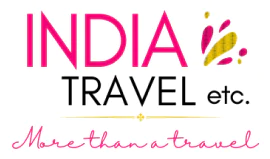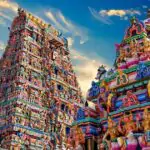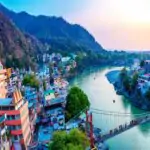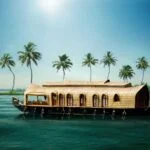You are at the right place; our experts have prepared for you a comprehensive guide of some practical information for a hassle-free trip to India.
The main airports for international flights coming from Europe, the USA, the UK, Australia, and New Zealand are:
For all foreign nationals, a passport valid 6 months before the date of arrival & a valid Indian visa is mandatory to visit India.
Visa in advance can be obtained in 7 days to 3 weeks from an Indian Embassy or mission in your country of origin.
From 15 November 2021, all vaccinated individuals are allowed to enter India. They must carry a negative RT- PCR test not less than 72h before the travel date.
No particular vaccine is mandatory to visit India. You have to be updated with your regular vaccines (polio, tetanus, diphtheria, hepatitis A and B, typhoid, rabies).
Protect yourself from mosquito bites. You can use repellents, mosquito nets, etc. for protection.
Food hygiene is very important; only eat in places where you can find good hygiene. Always drink bottled water.
The Indian currency is INR or Indian national rupees. The EURO, CAD, USD, and Australian Dollar are exchanged very easily in exchange offices. It is prohibited to import or export Indian rupees.
Keep your exchange slips with you so that you can change your Indian rupees into your currency when you leave India. Be careful; refuse to take torn currency notes because the merchants do not accept them.
Credit & Debit Cards
The visa and master cards are accepted in certain shops, top-of-the-range restaurants, and mid to upper-class hotels.
Visa and MasterCard are the most widely accepted. ATMs are present in most of the cities and villages in the country.
Tipping in India (driver, guide, restaurant, porter):
It is appreciated to leave a tip for the driver, guide, in restaurants & hotels. At the end of the tour, it is appreciated to leave a trip for the driver and the local guide (4 USD / 5 USD per day, per person) and the guide according to your satisfaction (5 USD to 8 USD per day, per person).
In restaurants for service, a tip of 100 Indian rupees (about 1.5USD) is sufficient. For a porter in a hotel, 50-60 rupees is fine.
Internet access and communication:
Internet cafes are widely spread throughout the country. Most hotels offer free wifi. You also have the option of buying a sim card with 4G to have the internet on your mobile devices.
Electricity:
In general, the voltage is 220 volts; there are sockets with 3 plugs. You don’t need an adapter for your electronic devices.
Telephone:
From abroad to India, dial 0091 + the number (with the city code without landline numbers and the zero + the number for mobiles).
From India to abroad, dial your country code + number without the initial zero.
You can buy a tourist sim card on arrival at the international airport of Delhi, Chennai & Kolkata for local calls and internet access.
Languages:
The language spoken in North India is Hindi but in South India, the common languages are the regional languages (Tamil, Kanada, Malayalam….). English is predominant throughout India.
Post – Mail:
Quite reliable but slow. Sending your post or parcel by registered mail to your country can take from one week to one month.
Shopping:
Bargaining is very common while shopping in India. Indian craftsmanship is very diverse. Silver jewelry, copper objects, silks, carpets, musical instruments, antiques, and cashmere… are some of the items you can bring home.
What you can buy from Duty-free: 50 cigars or 200 cigarettes or 250 g of tobacco, 1 liter of wine, 1 liter of spirits, and perfume intended for personal use are authorized.
Best period to visit India
The Indian climate consists of six seasons namely spring, summer, monsoon, autumn, mild winter, and winter. Touring incredible India will be a pleasant and fun-filled experience if you choose the right weather for the part you want to visit in India.
The best period to visit India (except the Himalayan regions) is from October to March when all the destinations of the country are at their freshest, waiting to offer you a rejuvenating travel experience.
During winter, north India experiences an average temperature ranging from 10°C – 20°C and it is 20°C -25°C in South India.
In summer, May and June are the hottest months and the average temperature ranges from 32°C – 45°C. So if you are visiting India avoid the month of May and June.
It is advisable to choose your clothes and accessories according to the season on your India Tour.
If you are traveling across India in summers or monsoon then light cotton clothes are suitable as it bears the heat and dust of Indian summer. It is better not to wear synthetic clothes in summer as you may develop some skin allergy or heat burns.
If you are traveling in winter pack good warm clothes. It is suggested to have pure woolen clothes, especially jackets, sweaters, trousers, and a light stole or scarf. These woolen clothes protect you from the bitter cold of the north and central India.
What to wear in general during a trip to India?
In general, tourists can wear comfortable dresses like jeans, trousers, full-sleeved shirts, shorts, and tee shirts. Full sleeves shirts and trousers are ideal for an India Tour as it protects from sunburn during the day, and mosquito bites at night.
Tourists have to walk for long while visiting various Indian attractions so it is advisable to wear good sturdy shoes. It will protect your feet from dust and dirt and also ease your feet on long walks.
What women travellers should wear during a trip to India?
For women travelers, it is advisable not to wear very short clothes, open tops, and exposing vests as it can attract evil eyes and annoying behaviors. Women can wear jeans, trousers, and long skirts or Salwar Kurta.
A light stole or scarf must be carried so they can cover their heads while visiting religious destinations in India. It can also be used to protect oneself from dust and heat.
We will suggest you wear Indian ethnic dresses so that you can feel the charm of Indian culture through ethnic wear.
Carry sun-block lotion, binoculars, candy, sunglasses, insect repellent, sun hat, flashlight, additional camera batteries, tissues, and basic medicines in your hand luggage bag.
Safety and Security
India is an admirable country and so are its people. This beautiful country is a safe destination for travelers. Although it is a wonderful country with friendly people but to be on the safer side tourists are advised to follow certain safety guidelines to make their tour to India hassle-free.
- Keep yourself aware of the local laws and customs of India as it will help you to enjoy a hassle-free trip.
- Before you land in India try to acquaint yourself with the norms of the Indian society so that you can avoid offending Indian sensibilities.
- Go according to your original plans and don’t get swayed by the offers of better hotels and accommodation by strangers.
- Avoid discussing your travel plans with strangers.
- Avoid discussing how much money you are carrying with any stranger or in public.
- You are advised not to travel alone at night, especially on roads and dimly lit lanes.
- If you have to meet any client or person, meet at a public place.
- Take care of your luggage and never hand it over to an unknown person.
- Don’t allow suspicious people or strangers to enter your room.
- Never leave your important documents and valuables unattended. Keep them in the hotel locker or a secure suitcase.
- Don’t carry huge sums of money while touring around.
- Don’t forget to carry your necessary medications and it’s better to keep extra stock.
- Don’t forget to make copies of the important documents like identity proof, visa, and passport as it will be helpful in case any of your documents get lost.
Laundry
Almost all the hotels offer the service of same-day laundry service.
Baggage Information
Baggage limits adhere very strictly to both international and domestic flights. On domestic flights, the baggage allowance is 15 kilograms per person for those traveling in economy class and 23 kilograms per person for those traveling in executive class.
Touts
During your travel in India, you will be deluged with touts trying to get you to buy something or patronize particular establishments. Completely ignore him/her until he goes away.
Tell him “NO”, very firmly, and repeatedly.
Discriminatory pricing
Foreign visitors will quickly encounter the special foreign rates that they are charged in most of the monuments in India. These rates are prominently posted at the entrance and ticketing booths.
Some tips while you are in India:
- Avoid kissing in public places.
- If you see two men holding hands in India, it is a symbol of friendship; it does not mean that they are homosexual.
- If you have the opportunity to visit a Temple or a religious place, it is mandatory to take off your shoes before entering. In the temples, it is not mandatory to buy offerings.
- If you take a taxi, a rickshaw, or a Tuk-Tuk, always negotiate the price before the ride.
- Do not follow people you do not know to visit markets, monuments, shops, etc., They could scam you.
- The common form of greeting in India is to say “Namaste” by joining the hands under the chin and bowing the head.
- Indians will often answer you by bobbing their heads from left to right (a bit like saying no in the western world), but don’t get it wrong, that doesn’t mean “No”, India it is the way to say say “yes”.
- In India dress decently, avoid shorts, mini-skirts, low cuts, bare shoulders, etc.
- If you want to take photos, ask permission beforehand, and don’t give anything in return.
- A word of advice, do not give money to beggars or children in the streets, it does not serve them anything. Because these people are often forced by their families and mafias into this trade.
- If you are invited to eat with an Indian family, you can offer Indian sweets to the host (the Indians are very fond of them). When you arrive, you will find the family waiting for you at the doorstep. You can greet by saying “Namaste”, joining your hands under your chin, and lowering your head. Take off your shoes at the door. In India, we do not take aperitifs and we take our meals at the table or on the floor.
- Knowing that we eat with our hands, we must therefore wash them before and after meals. During the meal it is preferable to use your right hand to eat, the left hand is considered impure. If you can’t eat with your hands, ask your host for a fork and knife.
- After the meal, wash your hands again. If your meal was served on a banana leaf (a South Indian tradition), throw it away yourself after you’re done.
- After the meal, you will find at your disposal on a plate a mixture of a










